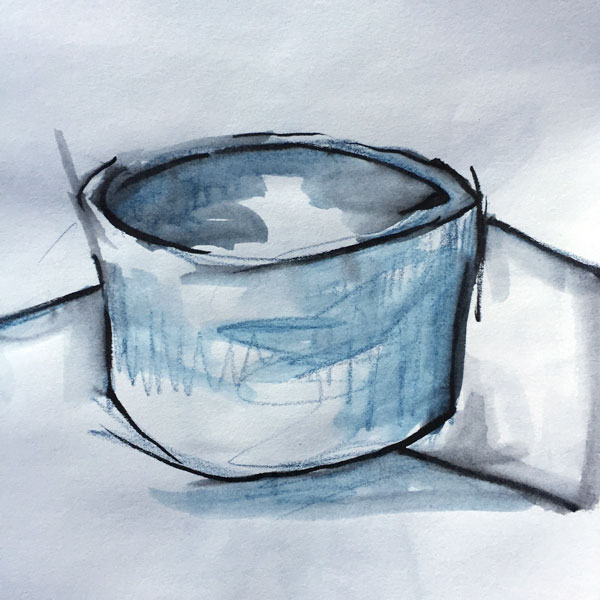
On Sunday we made a trip to the Smithsonian's Freer Gallery before it closes for several years of renovation to view the many objects that have become familiar friends. I gave
myself an assignment to make ten drawings as a way to
really look at these objects. Many have not remained static to me but have become altered in their meaning over the last thirty years .
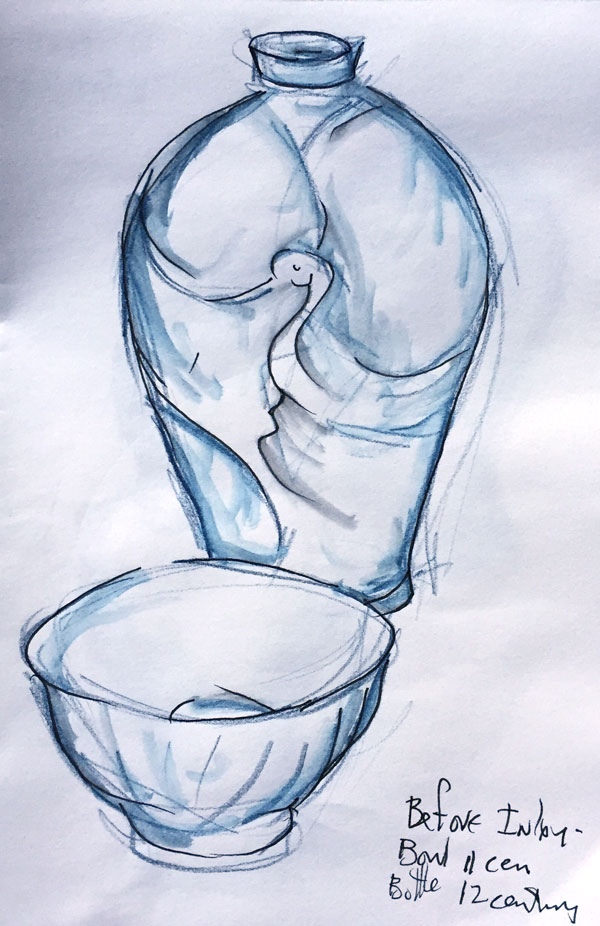 Because I have looked at them so many times I needed to
find a way to slow down so that I could quietly absorb nuances as they were revealed. When drawing I pay attention to details of shadow, surface, contour, and context. I aim for a loose likeness, but I am very accepting of distortion and the interpretation that my hand provides. In some ways the most interesting pots are the hardest to draw because they are such nuanced 3-dimensional objects, alive in rotation so it's hard to visually capture that changing volume without losing something on the 2-dimensional paper.
Because I have looked at them so many times I needed to
find a way to slow down so that I could quietly absorb nuances as they were revealed. When drawing I pay attention to details of shadow, surface, contour, and context. I aim for a loose likeness, but I am very accepting of distortion and the interpretation that my hand provides. In some ways the most interesting pots are the hardest to draw because they are such nuanced 3-dimensional objects, alive in rotation so it's hard to visually capture that changing volume without losing something on the 2-dimensional paper.
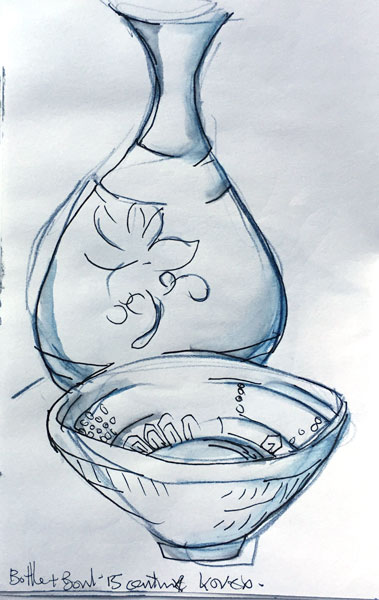 Afterwards we
headed over to visit the Renwick Gallery which was filled to bursting, everyone taking
photos of themselves amid the exhibit's objects of "Wonder." I was struck by not only was it a
completely different experience of material, but a completely different
experience of viewing. There was neither space nor time to absorb the
scale or nuance of the work.
Afterwards we
headed over to visit the Renwick Gallery which was filled to bursting, everyone taking
photos of themselves amid the exhibit's objects of "Wonder." I was struck by not only was it a
completely different experience of material, but a completely different
experience of viewing. There was neither space nor time to absorb the
scale or nuance of the work.
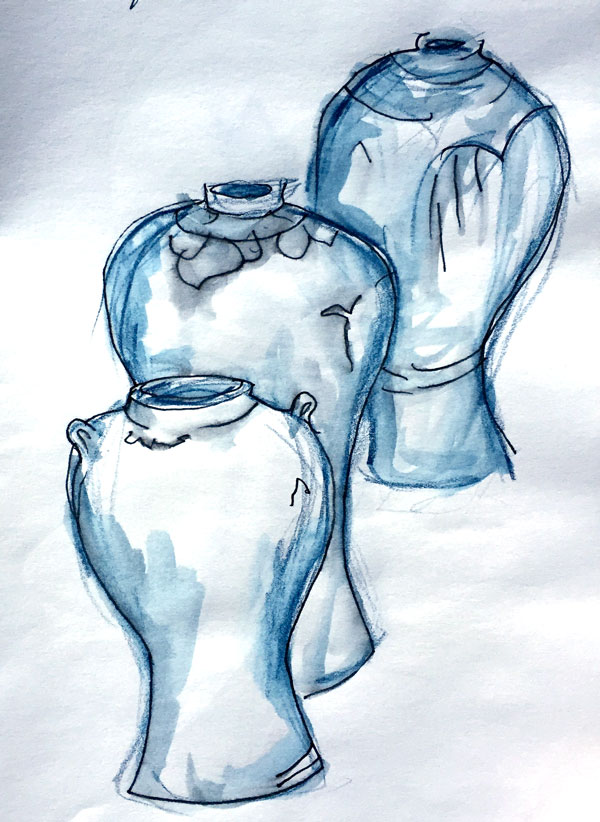 "Drawing makes you see things clearer, and clearer, and clearer still.
The image is passing through you in a physiological way, into your
brain, into your memory - where it stays - it's transmitted by your
hands."
"Drawing makes you see things clearer, and clearer, and clearer still.
The image is passing through you in a physiological way, into your
brain, into your memory - where it stays - it's transmitted by your
hands."
--David Hockney (in Martin Gayford, A Bigger Message: Conversations with David Hockney)
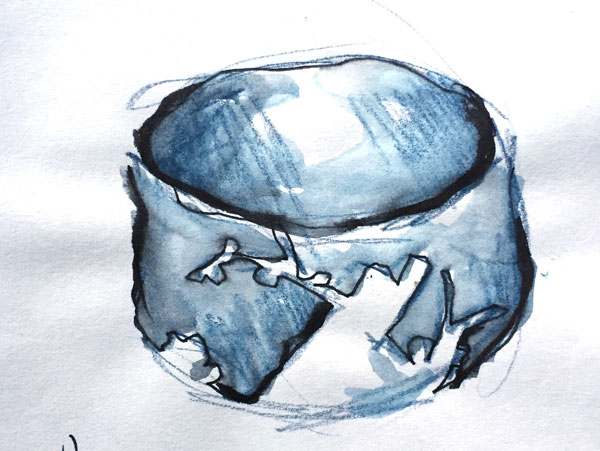
 Because I have looked at them so many times I needed to
find a way to slow down so that I could quietly absorb nuances as they were revealed. When drawing I pay attention to details of shadow, surface, contour, and context. I aim for a loose likeness, but I am very accepting of distortion and the interpretation that my hand provides. In some ways the most interesting pots are the hardest to draw because they are such nuanced 3-dimensional objects, alive in rotation so it's hard to visually capture that changing volume without losing something on the 2-dimensional paper.
Because I have looked at them so many times I needed to
find a way to slow down so that I could quietly absorb nuances as they were revealed. When drawing I pay attention to details of shadow, surface, contour, and context. I aim for a loose likeness, but I am very accepting of distortion and the interpretation that my hand provides. In some ways the most interesting pots are the hardest to draw because they are such nuanced 3-dimensional objects, alive in rotation so it's hard to visually capture that changing volume without losing something on the 2-dimensional paper.  Afterwards we
headed over to visit the Renwick Gallery which was filled to bursting, everyone taking
photos of themselves amid the exhibit's objects of "Wonder." I was struck by not only was it a
completely different experience of material, but a completely different
experience of viewing. There was neither space nor time to absorb the
scale or nuance of the work.
Afterwards we
headed over to visit the Renwick Gallery which was filled to bursting, everyone taking
photos of themselves amid the exhibit's objects of "Wonder." I was struck by not only was it a
completely different experience of material, but a completely different
experience of viewing. There was neither space nor time to absorb the
scale or nuance of the work. "Drawing makes you see things clearer, and clearer, and clearer still.
The image is passing through you in a physiological way, into your
brain, into your memory - where it stays - it's transmitted by your
hands."
"Drawing makes you see things clearer, and clearer, and clearer still.
The image is passing through you in a physiological way, into your
brain, into your memory - where it stays - it's transmitted by your
hands."--David Hockney (in Martin Gayford, A Bigger Message: Conversations with David Hockney)

Leave a comment